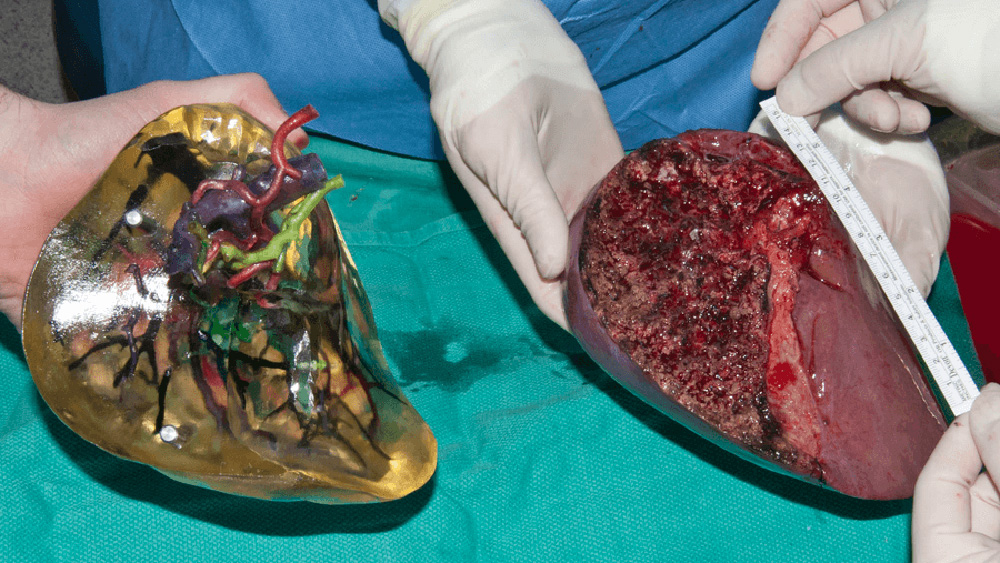Knowable/N.N. ZEIN ET AL / LIVER TRANSPLANTATION 2013
This story was originally published by Knowable Magazine.
What you see in the image above is a lobe of a liver, times two. On the right, a flesh-and-blood one, removed from a transplant donor; and on the left, one created from plastic to represent bile ducts, arteries, and veins, which were laid down, layer by layer, by a 3D printer. The goal of such technology is to help surgeons plan and practice complex procedures, and train new surgeons with simulators that respond as a patient would.
|
ADVERTISEMENT |
Surgeons navigate complex anatomical terrain as they manipulate scalpel and suture to cut and stitch precisely and quickly. Their job is made harder by the fact that human anatomy is far from uniform. To properly prepare, they routinely use two-dimensional images from computerized tomography (CT) scans or magnetic resonance imaging (MRI) to plan.
But increasingly they are turning to realistic 3D models that are specific for individual patients.
Such models are already used to educate patients, to do general training, and to plan and practice especially difficult procedures. But in the future, 3D models, be they physical or virtual, could become routine tools for training surgeons or mapping procedures in advance.
…

Add new comment